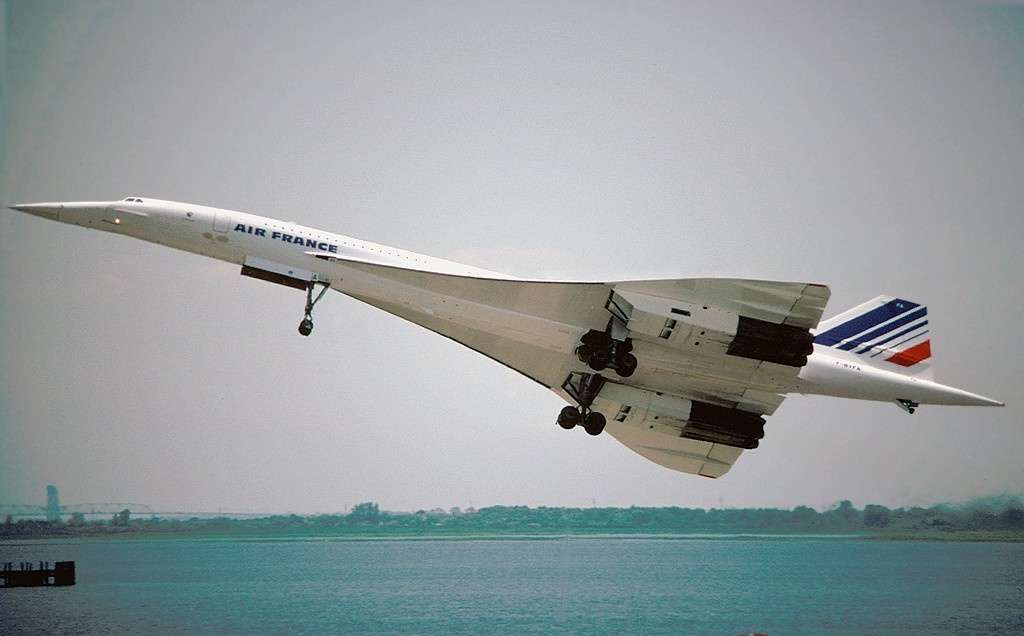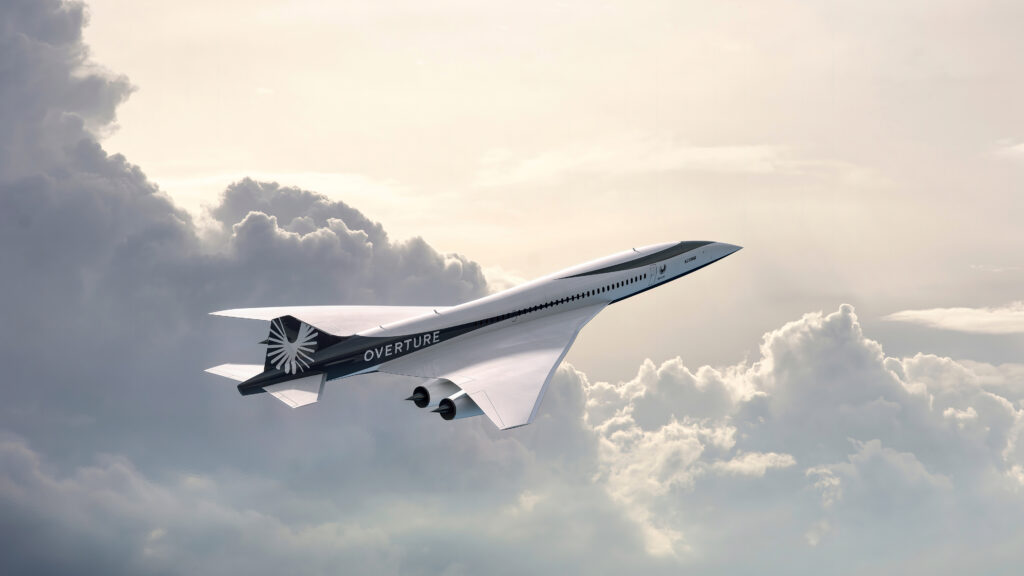The Boom Supersonic Overture is a new supersonic airliner currently under development by Boom Supersonic. It is designed to carry 65-88 passengers at Mach 1.7 (1,304 mph or 2,100 km/h), with a range of 4,250 nautical miles (4,890 mi or 7,870 km).
Currently in its production phase, the Overture is expected to enter service in 2029. As we look towards a reinvigorated era of supersonic commercial air travel once again, let’s compare the all-new aircraft with its iconic predecessor, the Concorde.

Overture vs. Concorde
The Overture has a number of similarities to the Concorde, the first commercial supersonic airliner, which was retired in 2003. Both aircraft are long and slender.. They also have a similar cruising speed and range.
However, there are also a number of key differences between the two aircraft. The Overture is smaller than the Concorde, with a shorter fuselage and a narrower wingspan.
[monsterinsights_popular_posts_inline]
Born into a ‘green era’ where efficiency, low emissions and low noise footprint have become critical considerations, it is perhaps unsurprising that there are some critical differences in this department.
Overture will be far more fuel-efficient and will operate with a lower noise profile.

Another key difference is that the Overture is designed to operate on sustainable aviation fuels (SAFs). SAFs are made from renewable sources, such as used cooking oil and agricultural waste. They can reduce greenhouse gas emissions by up to 80% compared to conventional jet fuel.
Similarities
Delta wing design: Both the Overture and the Concorde have a delta wing design, which is known to be more efficient at supersonic speeds compared to a conventional wing design.
Cruising speed: Both the Overture and the Concorde have a cruising speed of around Mach 1.7-2.
Range: Both aircraft have a range of around 4,250 nautical miles.

Differences
Size: The Overture is smaller than the Concorde, with a shorter fuselage and a narrower wingspan.
Fuel efficiency: The Overture is more fuel-efficient than the Concorde.
Droop nose: Concorde has a droop nose, which helps to reduce drag at supersonic speeds.
Noise profile: The aircraft has a lower noise profile than the Concorde.
Sustainable aviation fuels: The Overture is designed to operate on sustainable aviation fuels (SAFs), wheareas the Concorde operated on conventional jet fuel.
Passenger Capacity: The new Boom jet will have a capacity of 65-88 passengers, while the Concorde had a capacity of 92-128 passengers.
Engines: The Overture will be powered by four Symphony engines, while the Concorde was powered by four Rolls-Royce/Snecma Olympus 593 engines.
Potential impact of the Overture
The Overture has the potential to revolutionize air travel by making supersonic flight more accessible and sustainable.
Supersonic flight can reduce travel times by up to 50%, which could make it possible for people to live and work in different cities or even countries.

The Overture’s use of sustainable aviation fuel (SAF) is also significant, as it could help to reduce the aviation industry’s environmental impact.
SAFs are still in their early stages of development, but they have the potential to be a major step forward in reducing greenhouse gas emissions from air travel.
The Boom Supersonic Overture is a promising new aircraft that has the potential to change the way we travel.
Born into the current era of net zero emissions, is more fuel-efficient and has a lower noise profile than the Concorde, and it is designed to operate on sustainable aviation fuels.
The new aircraft is still under development, but it has the potential to revolutionize air travel by making supersonic flight more accessible and sustainable.
Additional thoughts
One of the key challenges that the Overture, like any other new generation supersonic aircraft, will need to overcome is public acceptance. The Concorde was retired in 2003 due to a number of factors, including environmental concerns and high operating costs.
Boom Supersonic will perhaps need to demonstrate that it’s aircraft can address these concerns before it can be widely accepted by the public and airlines; given the changed environment which is it being born into.
Another challenge is the cost of developing and building the new jet. Boom Supersonic has raised over $600 million in funding so far, but it will need to raise even more money to finally bring the Overture to market.
Despite these challenges, the Overture has the potential to be a game-changer for air travel. If it is successful, it could make supersonic flight more accessible and sustainable than ever before.

Click the banner to subscribe to our weekly newsleter.









